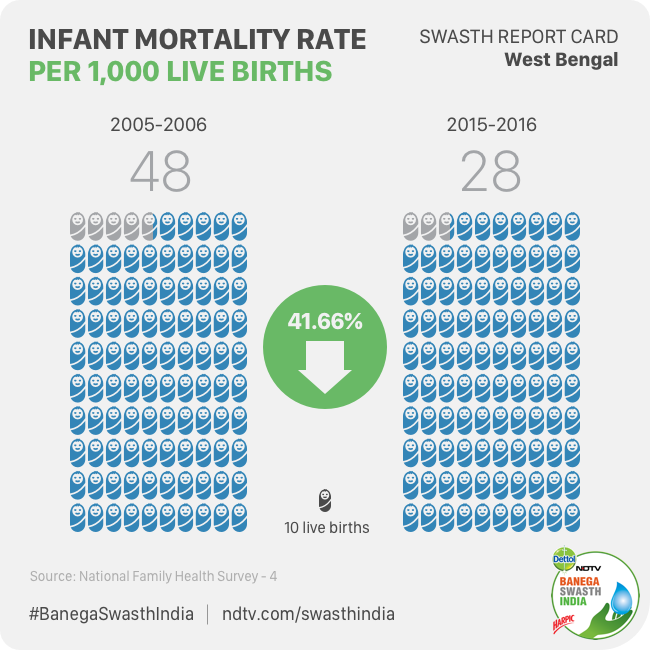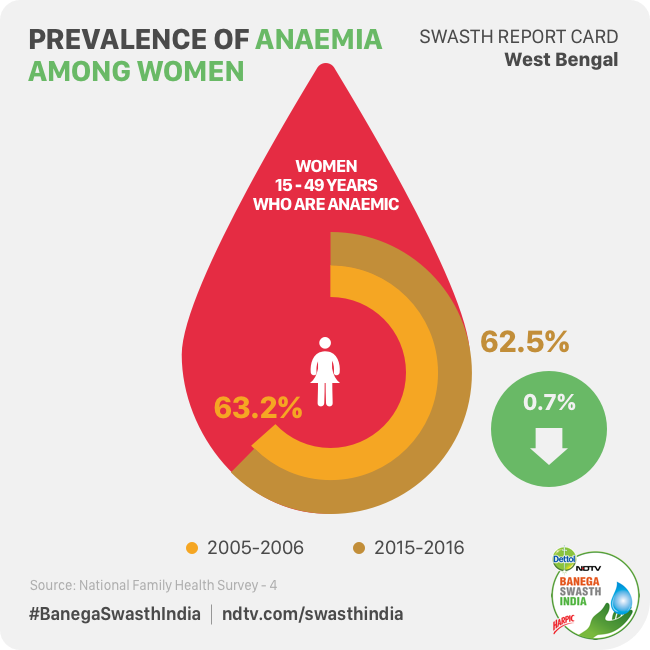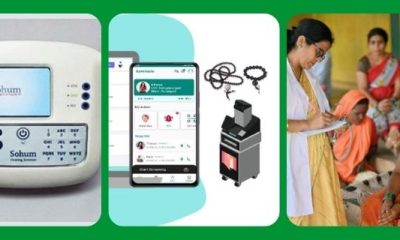New Delhi: In July 2017 Chief Minister of West Bengal Mamata Banerjee announced her resolution to reduce under-nutrition and anaemia amongst women and children in a targeted manner by 2020. For this, the state of West Bengal launched a state-level nutrition mission. According to the fourth and latest National Family Health Survey (NFHS 4), the state was indeed able to achieve some reduction in malnutrition and improvement in child healthcare. However, anaemia continues to remain a massive challenge as more than 50 per cent of children under five years of age and more than 60 per cent of women in the childbearing age group are still anaemic. In a bid to increase the healthcare for new mothers and babies, the state government proposed setting up of 13 Mother and Child Hubs in the state budget of the current year. The aim of these hubs is to ensure quantitative and qualitative improvement in maternal and child health services at hospitals where the number of patients is high.
Also Read: Malnutrition In India: Has This Decade Laid Down A Blueprint For A Malnutrition-Free India?
Here are some of the major health indicators that show the achievements of the state and the challenges facing it:
-
- Decline In Infant Mortality Rate Reflects Improved State of West Bengal’s Healthcare Facilities For Children: The infant mortality rate (IMR) in West Bengal in NFHS-4 (2015-16) is estimated at 28 deaths per 1,000 live births before the age of one year. This is a decline of almost 42 per cent from the NFHS-3 (2005-06) estimate of 48 deaths per 1,000 live births. The state has outperformed the country in terms of IMR as the national figure stands at 41 deaths per 1,000 live births, as per NFHS-4. The report shows that boys have a higher mortality rate than girls during the neonatal period or the first 28 days of life, and during the post-neonatal period (ages 1-11 months), girls have a slightly higher mortality rate than boys. IMR in rural areas is double (32) than that in the urban areas (16). While presenting the state budget for 2019-20, Amit Mitra, minister-in-charge of Finance Department under the Government of West Bengal announced that the IMR of the state has further reduced to 25 per 1,000 live births in 2018-19.
- West Bengal Outperformed The Nation In Reducing Under Five Child Mortality Rate: According to NFHS-4, the Under Five Child Mortality Rate (U5CMR) was 32 in 2015-16 which declined by almost half from U5CMR of 60 in NFHS-3. In terms of U5CMR, the state has outperformed the country that stands at 50 in NFHS-4. However, it is important to note that U5CMR in rural areas of the state is more than double (38) of that in the urban areas (16).
-
- About One-Third Of West Bengal’s Children Are Malnourished: Children’s nutritional status in West Bengal has improved since 2005-2006 by only some measures. NFHS-4 reports that about 32. 5 per cent of children under the age of five in the state are stunted or too short for their age. There has been a decline of about 12.1 per cent in the prevalence of stunting which was about 45 in the NFHS-3. However, more than 20 per cent of the total children in the state are wasted, or too thin for their height, which may result from inadequate food intake or a recent illness-causing weight loss. There has been an increase from 17 per cent in 2005-06 to 20 per cent in 2015-16 in the prevalence of wasting in the state. About 32 per cent children in the state were underweight in 2015-16 which was 38.7 per cent in 2005-06.In a bid to tackle malnutrition in the state, the government of West Bengal has joined hand with UNICEF recently and has set a five-step agenda which aims on empowering families and building a healthy food environment to fight the aforementioned triple burden of malnutrition along with various vitamin and mineral deficiencies.
Also Read: Here Are Tips On How To Tackle ‘Hidden Hunger’ In Children Caused By Lack Of Micronutrients
-
- High Prevalence Of Anaemia Among Women And Children: Anaemia is a condition that is marked by low levels of haemoglobin in the blood. This blood disorder is a major health problem in West Bengal, especially among women and children. Among children between the ages of 6 and 59 months, more than half (54.2 per cent) are anaemic, finds NFHS-4.
The survey also reports that about 63 per cent of women in West Bengal have anaemia. The report finds that Anaemia is particularly high for women who are breastfeeding. As per NFHS-4, anaemia among women has decreased marginally (by 1 percentage point) since NFHS-3.
-
- The State Contributes About 17 Per Cent To The Total Diarrhoeal Cases In India in 2017: According to National Health Profile (NHP) 2019 report developed by the Ministry of Health and Family Welfare of the Government of India, cases of Diarrhoeal disease in 2018 were 22.5 Lakh which increased by about 6.4 per cent from 21.15 Lakh in 2017. Out of the total cases of Diarrhoea in India in 2018 which was almost 1.3 crore (1,31,94,775), West Bengal contributed to about 17.06 per cent. The deaths caused by Diarrhoea also increased from 129 in 2017 to 167 in 2018 which is worse than all the state and union territories of India except Assam and Uttar Pradesh where the number Diarrhoeal deaths count to 439 and 229 respectively in 2018. On the occasion of Oral Rehydration Salts (ORS) Day on July 29 this year, CM Banerjee acknowledged on social media that acute diarrhoeal diseases are one of the leading causes of mortality in infants in West Bengal.
Note: For the National Family Health Survey (NFHS) 4, information for West Bengal was gathered from a sample of over 15,327 households, which covered 17,668 women, and 2,402 men. In NFH-3, information was collected from 5,992 households including 6,794 women and 2,669 men.
Also Read: West Bengal Government And UNICEF Set A Five Step Agenda To Fight Malnutrition In The State
[corona_data_new]

























